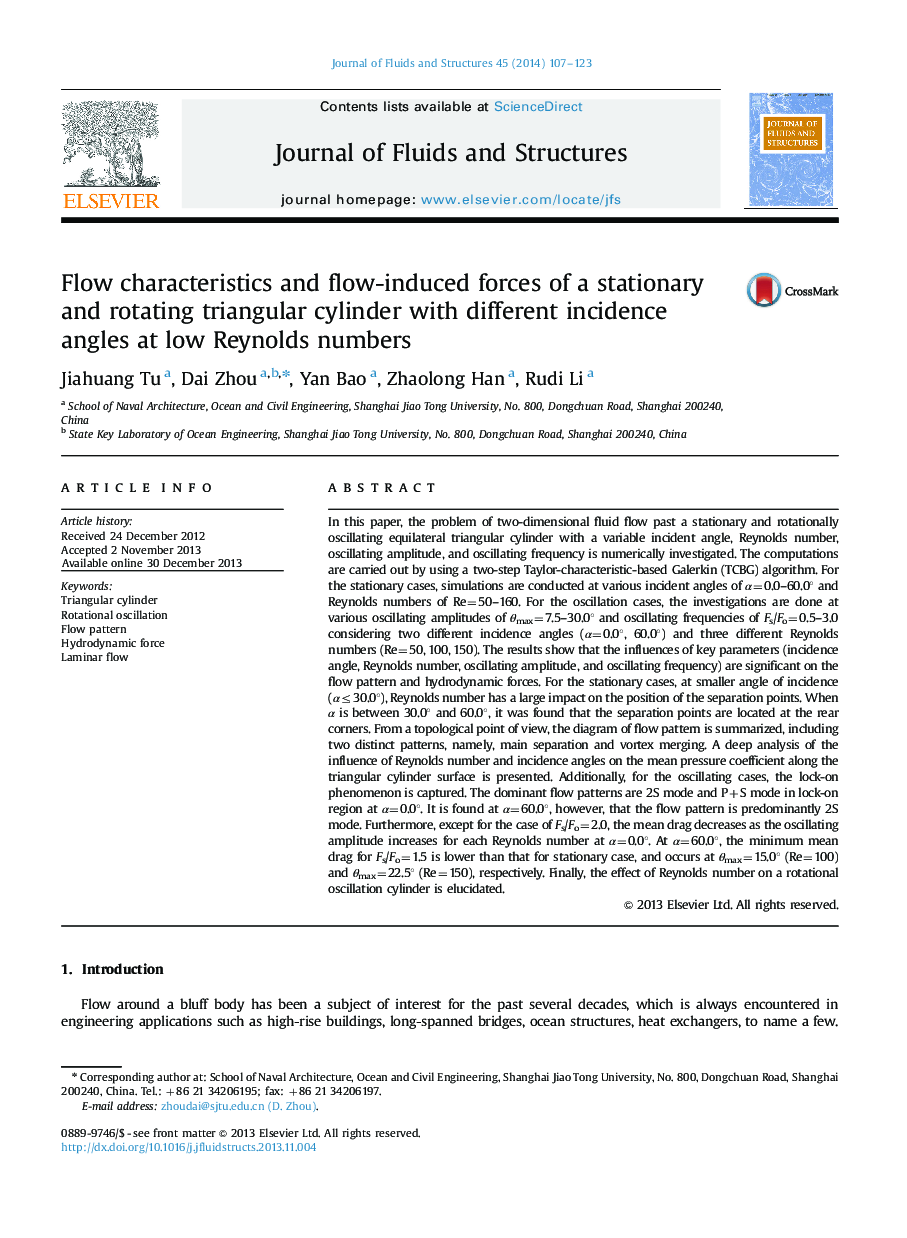| کد مقاله | کد نشریه | سال انتشار | مقاله انگلیسی | نسخه تمام متن |
|---|---|---|---|---|
| 793739 | 1466602 | 2014 | 17 صفحه PDF | دانلود رایگان |
• Flow past a triangular cylinder at low Re is numerically investigated.
• Flow past a rotary oscillating triangular cylinder is also investigated.
• The flow pattern table of a triangle is created for stationary case.
• The effects of Re and α on the flow past an oscillating cylinder are studied.
• The effects of Fs and θmax on the flow past an oscillating cylinder are studied.
In this paper, the problem of two-dimensional fluid flow past a stationary and rotationally oscillating equilateral triangular cylinder with a variable incident angle, Reynolds number, oscillating amplitude, and oscillating frequency is numerically investigated. The computations are carried out by using a two-step Taylor-characteristic-based Galerkin (TCBG) algorithm. For the stationary cases, simulations are conducted at various incident angles of α=0.0–60.0° and Reynolds numbers of Re=50–160. For the oscillation cases, the investigations are done at various oscillating amplitudes of θmax=7.5–30.0° and oscillating frequencies of Fs/Fo=0.5–3.0 considering two different incidence angles (α=0.0°, 60.0°) and three different Reynolds numbers (Re=50, 100, 150). The results show that the influences of key parameters (incidence angle, Reynolds number, oscillating amplitude, and oscillating frequency) are significant on the flow pattern and hydrodynamic forces. For the stationary cases, at smaller angle of incidence (α≤30.0°), Reynolds number has a large impact on the position of the separation points. When α is between 30.0° and 60.0°, it was found that the separation points are located at the rear corners. From a topological point of view, the diagram of flow pattern is summarized, including two distinct patterns, namely, main separation and vortex merging. A deep analysis of the influence of Reynolds number and incidence angles on the mean pressure coefficient along the triangular cylinder surface is presented. Additionally, for the oscillating cases, the lock-on phenomenon is captured. The dominant flow patterns are 2S mode and P+S mode in lock-on region at α=0.0°. It is found at α=60.0°, however, that the flow pattern is predominantly 2S mode. Furthermore, except for the case of Fs/Fo=2.0, the mean drag decreases as the oscillating amplitude increases for each Reynolds number at α=0.0°. At α=60.0°, the minimum mean drag for Fs/Fo=1.5 is lower than that for stationary case, and occurs at θmax=15.0° (Re=100) and θmax=22.5° (Re=150), respectively. Finally, the effect of Reynolds number on a rotational oscillation cylinder is elucidated.
Journal: Journal of Fluids and Structures - Volume 45, February 2014, Pages 107–123
